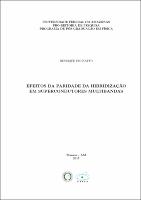| ???jsp.display-item.social.title??? |


|
Please use this identifier to cite or link to this item:
https://tede.ufam.edu.br/handle/tede/5710Full metadata record
| DC Field | Value | Language |
|---|---|---|
| dc.creator | Pecinatto, Henrique | - |
| dc.creator.Lattes | http://lattes.cnpq.br/1673661909466037 | por |
| dc.contributor.advisor1 | Padilha, Igor Tavares | - |
| dc.contributor.advisor1Lattes | http://lattes.cnpq.br/4605895860650284 | por |
| dc.date.issued | 2017-04-25 | - |
| dc.identifier.citation | PECINATTO, Henrique. Efeitos da paridade da hibridização em supercondutores multibandas. 2017. 86 f. Dissertação (Mestrado em Física) - Universidade Federal do Amazonas, Manaus, 2017. | por |
| dc.identifier.uri | http://tede.ufam.edu.br/handle/tede/5710 | - |
| dc.description.resumo | Estudos recentes tem mostrado que a hibridização antissimétrica favorece a formação de estados ligados entre as quasipartículas, e este é o principal mecanismo para o aumento da supercondutividade em sistemas de duas bandas. Neste trabalho, é estudado um sistema supercondutor de duas bandas genéricas com a formação de pares de Cooper intrabanda e um termo interbanda responsável pela criação de pares de Cooper formados por férmions de diferentes bandas. A hibridização tem o papel de transferir as quasipartículas entre as bandas e pode ser experimentalmente ajustado por um fator externo tal como a pressão ou dopagem, permitindo explorar os diagramas de fase. Assim, tem-se um modelo bastante geral, com a proposta de abordar as diferenças que a paridade da hibridização infere nos casos puramente intrabanda e interbanda. As energias de excitações bem como as equações de gap são obtidas por meio do método das funções de Green, e é encontrado que os casos puramente intrabanda independem da paridade da hibridização. Para a hibridização simétrica, o caso interbanda apresenta uma descontinuidade no parâmetro de ordem, fato que não ocorre na hibridização antissimétrica. | por |
| dc.description.abstract | Recent studies have shown that antisymmetric hybridization favors the formation of bound states among the quasiparticles, and this is the main mechanism of the enhancement of the superconductivity in two-band systems. In this work, we study a generic two-band superconducting system, which forms intraband Cooper pairs and a term that’s responsible for the creation of Cooper’ pairs formed by fermions from different bands. The hybridization plays the role to transfer the quasiparticles among the bands and it can be tuned experimentally by an external factor like pressure or doping, allowing to explore the phase diagrams. Thus, the model is quite general, and we have the proposal to discuss the differences that hybridization parity acts in the purely intraband and interband case. The excitation energies as well the gap equation are obtained using the Green function’s method, and it had found the purely intraband case is no dependent of the hybridization parity. In the case of symmetric hybridization, the intraband case shows a discontinuity in the order parameter, a fact that doesn’t occur in the antisymmetric hybridization. | eng |
| dc.description.sponsorship | CAPES | por |
| dc.format | application/pdf | * |
| dc.thumbnail.url | http://tede.ufam.edu.br//retrieve/16919/Disserta%c3%a7%c3%a3o%20-Henrique%20Pecinatto.pdf.jpg | * |
| dc.language | por | por |
| dc.publisher | Universidade Federal do Amazonas | por |
| dc.publisher.department | Instituto de Ciências Exatas | por |
| dc.publisher.country | Brasil | por |
| dc.publisher.initials | UFAM | por |
| dc.publisher.program | Programa de Pós-graduação em Física | por |
| dc.rights | Acesso Aberto | por |
| dc.rights.uri | http://creativecommons.org/licenses/by-nc-nd/4.0/ | - |
| dc.subject | Supercondutividade | por |
| dc.subject | Modelo duas bandas | por |
| dc.subject | Hibridização | por |
| dc.subject | Superconductivity | eng |
| dc.subject | Two-band model | eng |
| dc.subject | Hybridization | eng |
| dc.subject.cnpq | CIENCIAS EXATAS E DA TERRA: FISICA :FISICA DA MATERIA CONDENSADA | por |
| dc.title | Efeitos da paridade da hibridização em supercondutores multibandas | por |
| dc.type | Dissertação | por |
| Appears in Collections: | Mestrado em Física | |
Files in This Item:
| File | Description | Size | Format | |
|---|---|---|---|---|
| Dissertação -Henrique Pecinatto.pdf | 29.5 MB | Adobe PDF |  Download/Open Preview |
This item is licensed under a Creative Commons License





